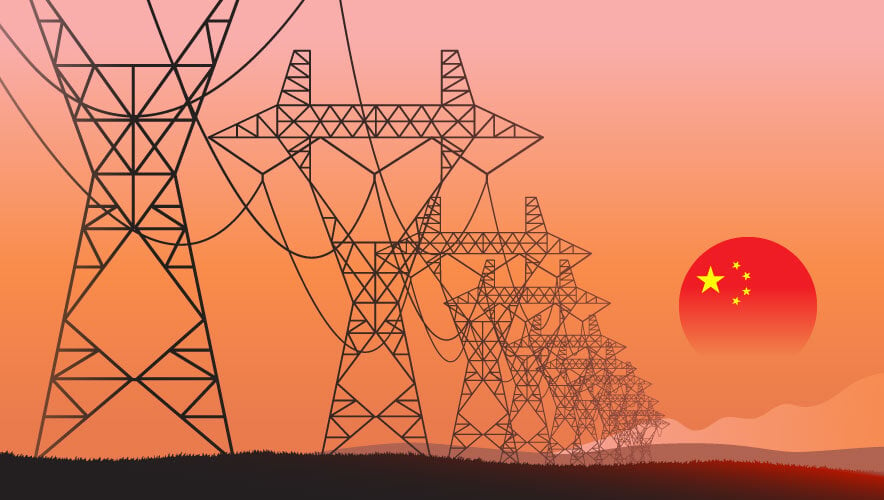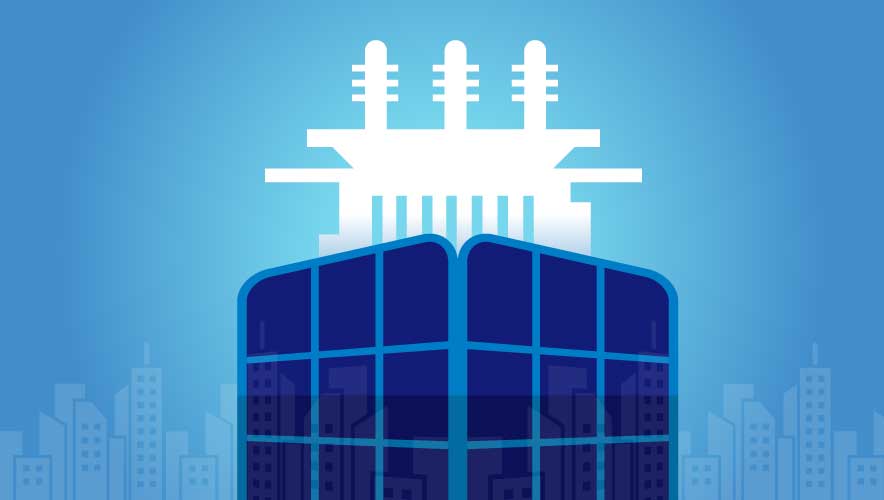Why China’s Global Electric Project Has National Security Experts on Alert
Christmas 2023 came a little bit early for China’s State Grid. The week before the holiday, its Brazilian holding company announced it won the largest lot in the biggest auction of Brazil’s electricity transmission lines in history.
State Grid, a Chinese state-owned electric utility company, will invest BRL 18.1 billion ($3.6 billion) during the next six years to build 1,513 kilometers of transmission lines and substations across three states in Brazil.
“The project aims to increase the capacity of the interconnection between the Northeast and Central-West regions to transport surplus energy from Brazil’s northeast, including from renewable sources such as wind and solar—the tender required high conversion capacity for lines and substations to transport energy from renewable plants, something that the Chinese company masters,” according to The Brazilian Report.
As part of its Belt and Road Initiative, China has been working around the world to partner with countries, local governments, and private companies to finance energy projects. Research from the Wilson Center, published before the Brazil deal, found that since 2000, combined investments of approximately $10 billion from the China Development Bank and China Export-Import Bank have gone toward energy generation and distribution projects in Latin America and the Caribbean.
Why is this outside investment welcomed? In part, because the projects are needed to power an increasingly connected global economy. And, because China has the expertise to deliver results, says Ismael Arciniegas Rueda, senior economist and professor of policy analysis, Pardee RAND Graduate School.
“China is the only one with the financial muscle, and especially when you think about this ultra-high voltage, very long-distance transmission lines, it’s the only one that knows how to do it,” he adds.
“China is the only one with the financial muscle.”
A Global Grid
Chinese President Xi Jinping laid the groundwork for these investments in 2015 when he announced at a United Nations summit a plan to create a global power grid—dubbed the Global Energy Interconnection (GEI)—to help the world achieve the long-term goals set out in the Paris Agreement (limiting temperature rise to within 2⁰C by the end of the 21st century).
At the time, more than 1 billion people in the world did not have access to electricity. Under Xi’s vision, the GEI would be used to transition toward clean and low-carbon energy to tackle climate change while also bringing electricity to communities without it.
Speaking before the United Nations in 2016, Wu Hongbo, UN under-secretary-general for economic and social affairs, explained that the GEI would help the world realize the goal of “sustainable energy for all.
“Many developing countries and regions in Africa, Asia, and Latin America are rich in renewable energy resources such as wind, solar, and hydro,” Wu said. “Through GEI, those resources could be converted into economic advantage that would benefit all, narrow regional gaps, and make a significant contribution to the peaceful and harmonious development of the world.”
To do this, implementors would need to develop power grids with ultra-high voltage (UHV) power transmission to create an interconnected system to move power around the world. UHV transmission lines operate at more than 800,000 volts to transport electricity across long distances with limited power loss. The first line of this type was built in the Soviet Union in 1985 to stretch 500 kilometers between Ekibastuz and Kokchetau, Kazakhstan.
Since the 1980s, China has worked to develop the expertise to create these transmission lines domestically. It was the first country to begin using 1 million volt transmission lines, as well as to use transmission lines that stretch 2,500 kilometers, according to analysis from Emerson.
Under the GEI initiative, China plans to partner and invest in projects across the globe to create power grid interconnections for main countries on every continent by 2035. Then, these interconnections would be connected between continents by 2050 to create a globally connected electric grid by 2070.
China has moved to make those goals a reality, with firms like State Grid investing heavily in energy projects in Latin America and South America—especially in transmission projects, which often see less attention than power generation projects, says Fiona Quimbre, senior analyst at RAND Europe who leads the China portfolio.
China is “filling a vacuum” that other global powers are unwilling to invest in now, she adds.
Quimbre and Arciniegas’s research has identified, for instance, that China’s State Grid has devoted significant resources to developing its capabilities to be the leader in the UHV technology field—including nearly tripling its research and design budget between 2004 and 2007 (around $458 million to $1.3 billion, respectively).
State Grid also helped found the Global Energy Interconnection Research Institute (GEIRI) to create China’s first research center focused on GEI and its related equipment. Following that launch, State Grid created GEIRI Europe in 2014 to collaborate with European partners on GEI-related technologies, including intelligent sensing and measurement, high-voltage direct current energy transmission, and high-end electric materials.
China has also invested heavily in developing submarine cables that will transmit electricity, bringing it closer to edging past South Korea, which has traditionally dominated this space. RAND research found that China filed four—and the only—submarine cable patents between 2020 and 2021, compared to South Korea, which filed its patents between 2014 and 2017.
Quimbre highlights this as a trend to watch. If China does surpass South Korea in this field, it will create new critical interdependencies for countries like the United Kingdom that are building offshore power generation infrastructure—such as wind farms—that need to be linked back to the mainland via submarine electric cables.
“If this is where electrification is going, and some critical components are produced by China and linked to actors with the Chinese military, then that raises that national security risk,” she explains.
Security Concerns
To better understand the national security risks of the GEI project, Arciniegas and Quimbre worked with eight other researchers to assess where the project stands, potential barriers to its realization, and the risks associated with its completion. They published their findings in the report Global Energy Interconnection: Exploring the Security Implications of a Power Grid Developed and Governed by China, in December 2023.
Quembre says they decided to begin this research in 2021 because attention to the GEI initiative has diminished, but Chinese efforts to see it realized have not gone away.
For instance, the December contract in Brazil marks the third UHV transmission line that State Grid is building in the country—bringing the total number of UHV lines constructed by China to 37. The rest of the world, Quimbre adds, has built only two.
“There is evidence that the GEI continues to have government support in Beijing, and this raises important national security consideration for many nations—not just the U.S. but also the Global South, which is the recipient of a lot of the financing for the GEI at the moment,” Quimbre adds. “We felt like it was time that we turned the light back on, on what is a poorly understood initiative.”
The research also renewed interest in how energy systems could be weaponized, due both to the Russian invasion of Ukraine in early 2022 and to discussions about how Russia might weaponize natural gas lines that powered Europe.
“The question arose, can China do the same in this scenario?” Quimbre adds.
The short answer: not really. Natural gas pipelines can be turned off with few consequences for operators. The same is not true for electric grid operators, where they are constantly working to balance the supply of power with the demand for it to maintain a functioning grid.
“Russia was a net exporter of natural gas to Europe,” Quimbre says. “In the context of GEI, China is both an exporter and an importer of electricity from—and to—Europe. There is an interdependency. Unlike Moscow, Beijing cannot so-called pull the plug without harming itself in the process.”
“Unlike Moscow, Beijing cannot so-called pull the plug without harming itself in the process.”
The researchers found, however, that China could use the interdependencies created through the GEI to “strong-arm partner countries into favoring its conditions,” according to the report.
“The economic leverage that Beijing can gain from the interdependency that’s built into the initiative, however, is more attractive and consistent with China’s playbook,” Quimbre explains. “This more likely to be the route China would take if it controlled such an initiative and such a project on a global scale.”
She adds that China might also leverage the GEI for espionage or sabotage, such as “leveraging growing commercial and civilian penetration of foreign power grids for military purposes.”
To perhaps quell some of these concerns, Arciniegas says he has noticed that China is taking steps to tone down potential concerns about the grid being controlled and governed by China. He explains that China now emphasizes that the GEI is not a one-country initiative but a project that is a partnership between local folks and local governments.
This emphasis is especially apparent when viewing information about the GEI on the Western Internet, where it’s referred to as a “global initiative,” compared to the Chinese media space, where the GEI is called a “China initiative” or “my country initiative,” Quimbre adds.
“That really is a change in the narrative and in the presentation of it that it is more inclusive,” she says. “But it doesn’t go into the fine details of who sits on the board of the organization. Who is developing the patterns behind it and the standards?”
Based on analysis for the report, RAND found that, while China may downplay its role in the GEI, it is strongly positioned to play a leading role in the effort. The researchers assessed that China ranks number one in three out of four indicators to determine national standing on GEI-enabled technologies.
For instance, the researchers tracked that China has 914 patents for technology and equipment for power distribution and utilization, compared to South Korea with just 15 and the United States with only 18. China is also the leader in patents for UHV AC technology and equipment (942 patents, compared with the United States’s 94) and UHV DC technology and equipment (36 patents, compared to the United States’s 4).
“These results suggest that a strong case can be made that China is currently the global leader for GEI-enabling technologies and, therefore, is well positioned to play a leading role in the development of the GEI and other super grids if they are adopted,” according to the report.
With this in mind, the RAND research team looked at four scenarios of how the GEI might ultimately be developed and the security risks related to each potential plan. It then created a list of potential measures to mitigate those risks. These could include countering the GEI with a more affordable and attractive alternative, using measures to simply end the GEI initiative, or moving to make the GEI “harmless” by “increasing the electrification of global economies and societies, investing in microgrids and long-duration energy storage to increase resilience, creating robust international standards for isolated systems, and boosting cybersecurity of electricity systems,” the report explained.
“Killing the GEI is not going to be a good idea,” Arciniegas says. Instead, he thinks the most likely scenario is that other world leaders act to render the GEI harmless or implement measures to take the risks of the initiative into account while letting the work proceed.
“When countries work with China to address clear needs that they have in bringing power to people that don’t have it, I think it would be unwise for the U.S. or the West to object to that,” he says.
Arciniegas also explains that it’s important to recognize the potential benefits that creating more interconnections in electric grid infrastructure and the ability to monitor them could have. Take wind power generation, for example.
“The Arctic has huge potential for wind energy, but there are not many people that live next to these windmills,” he says. “Having the possibility of transporting all that power to a place like Shanghai, where there’s a lot of people, definitely would have a benefit for the whole world of reducing the need of coal power plants next to these centers of consumption.”
Megan Gates is editor-in-chief of Security Technology. Connect with her at [email protected] or on LinkedIn. Follow her on X or Threads: @mgngates.











